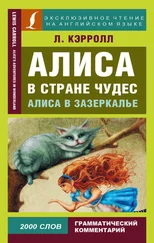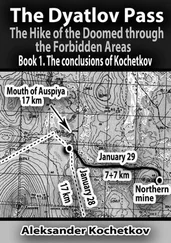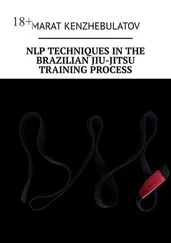Theodore Roosevelt - Through the Brazilian Wilderness
Здесь есть возможность читать онлайн «Theodore Roosevelt - Through the Brazilian Wilderness» — ознакомительный отрывок электронной книги совершенно бесплатно, а после прочтения отрывка купить полную версию. В некоторых случаях можно слушать аудио, скачать через торрент в формате fb2 и присутствует краткое содержание. Жанр: Путешествия и география, foreign_antique, foreign_prose, на английском языке. Описание произведения, (предисловие) а так же отзывы посетителей доступны на портале библиотеки ЛибКат.
- Название:Through the Brazilian Wilderness
- Автор:
- Жанр:
- Год:неизвестен
- ISBN:нет данных
- Рейтинг книги:5 / 5. Голосов: 1
-
Избранное:Добавить в избранное
- Отзывы:
-
Ваша оценка:
- 100
- 1
- 2
- 3
- 4
- 5
Through the Brazilian Wilderness: краткое содержание, описание и аннотация
Предлагаем к чтению аннотацию, описание, краткое содержание или предисловие (зависит от того, что написал сам автор книги «Through the Brazilian Wilderness»). Если вы не нашли необходимую информацию о книге — напишите в комментариях, мы постараемся отыскать её.
Through the Brazilian Wilderness — читать онлайн ознакомительный отрывок
Ниже представлен текст книги, разбитый по страницам. Система сохранения места последней прочитанной страницы, позволяет с удобством читать онлайн бесплатно книгу «Through the Brazilian Wilderness», без необходимости каждый раз заново искать на чём Вы остановились. Поставьте закладку, и сможете в любой момент перейти на страницу, на которой закончили чтение.
Интервал:
Закладка:
Our whole stay on this ranch was delightful. On the long rides we always saw something of interest, and often it was something entirely new to us. Early one morning we came across two armadillos—the big, nine-banded armadillo. We were riding with the pack through a dry, sandy pasture country, dotted with clumps of palms, round the trunks of which grew a dense jungle of thorns and Spanish bayonets. The armadillos were feeding in an open space between two of these jungle clumps, which were about a hundred yards apart. One was on all fours; the other was in a squatting position, with its fore legs off the ground. Their long ears were very prominent. The dogs raced at them. I had always supposed that armadillos merely shuffled along, and curled up for protection when menaced; and I was almost as surprised as if I had seen a turtle gallop when these two armadillos bounded off at a run, going as fast as rabbits. One headed back for the nearest patch of jungle, which it reached. The other ran at full speed—and ran really fast, too—until it nearly reached the other patch, a hundred yards distant, the dogs in full cry immediately behind it. Then it suddenly changed its mind, wheeled in its tracks, and came back like a bullet right through the pack. Dog after dog tried to seize it or stop it and turned to pursue it; but its wedge-shaped snout and armored body, joined to the speed at which it was galloping, enabled it to drive straight ahead through its pursuers, not one of which could halt it or grasp it, and it reached in safety its thorny haven of refuge. It had run at speed about a hundred and fifty yards. I was much impressed by this unexpected exhibition; evidently this species of armadillo only curls up as a last resort, and ordinarily trusts to its speed, and to the protection its build and its armor give it while running, in order to reach its burrow or other place of safety. Twice, while laying railway tracks near Sao Paulo, Kermit had accidentally dug up armadillos with a steam-shovel.
There were big ant-hills, some of them of huge dimensions, scattered through the country. Sometimes they were built against the stems of trees. We did not here come across any of the poisonous or biting ants which, when sufficiently numerous, render certain districts uninhabitable. They are ordinarily not very numerous. Those of them that march in large bodies kill nestling birds, and at once destroy any big animal unable to get out of their way. It has been suggested that nestlings in their nests are in some way immune from the attack of these ants. The experiments of our naturalists tended to show that this was not the case. They plundered any nest they came across and could get at.
Once we saw a small herd of peccaries, one a sow followed by three little pigs—they are said to have only two young, but we saw three, although of course it is possible one belonged to another sow. The herd galloped into a mass of thorny cover the hounds could not penetrate; and when they were in safety we heard them utter, from the depths of the jungle, a curious moaning sound.
On one ride we passed a clump of palms which were fairly ablaze with bird color. There were magnificent hyacinth macaws; green parrots with red splashes; toucans with varied plumage, black, white, red, yellow; green jacmars; flaming orioles and both blue and dark-red tanagers. It was an extraordinary collection. All were noisy. Perhaps there was a snake that had drawn them by its presence; but we could find no snake. The assembly dispersed as we rode up; the huge blue macaws departed in pairs, uttering their hoarse "ar-rah-h, ar-rah-h." It has been said that parrots in the wilderness are only noisy on the wing. They are certainly noisy on the wing; and those that we saw were quiet while they were feeding; but ordinarily when they were perched among the branches, and especially when, as in the case of the little parakeets near the house, they were gathering materials for nest-building, they were just as noisy as while flying.
The water-birds were always a delight. We shot merely the two or three specimens the naturalists needed for the museum. I killed a wood-ibis on the wing with the handy little Springfield, and then lost all the credit I had thus gained by a series of inexcusable misses, at long range, before I finally killed a jabiru. Kermit shot a jabiru with the Luger automatic. The great, splendid birds, standing about as tall as a man, show fight when wounded, and advance against their assailants, clattering their formidable bills. One day we found the nest of a jabiru in a mighty fig-tree, on the edge of a patch of jungle. It was a big platform of sticks, placed on a horizontal branch. There were four half-grown young standing on it. We passed it in the morning, when both parents were also perched alongside; the sky was then overcast, and it was not possible to photograph it with the small camera. In the early afternoon when we again passed it the sun was out, and we tried to get photographs. Only one parent bird was present at this time. It showed no fear. I noticed that, as it stood on a branch near the nest, its bill was slightly open. It was very hot, and I suppose it had opened its bill just as a hen opens her bill in hot weather. As we rode away the old bird and the four young birds were standing motionless, and with gliding flight the other old bird was returning to the nest. It is hard to give an adequate idea of the wealth of bird life in these marshes. A naturalist could with the utmost advantage spend six months on such a branch as that we visited. He would have to do some collecting, but only a little. Exhaustive observation in the field is what is now most needed. Most of this wonderful and harmless bird life should be protected by law; and the mammals should receive reasonable protection. The books now most needed are those dealing with the life-histories of wild creatures.
Near the ranch-house, walking familiarly among the cattle, we saw the big, deep-billed Ani blackbirds. They feed on the insects disturbed by the hoofs of the cattle, and often cling to them and pick off the ticks. It was the end of the nesting season, and we did not find their curious communal nests, in which half a dozen females lay their eggs indiscriminately. The common ibises in the ponds near by—which usually went in pairs, instead of in flocks like the wood ibis—were very tame, and so were the night herons and all the small herons. In flying, the ibises and storks stretch the neck straight in front of them. The jabiru—a splendid bird on the wing—also stretches his neck out in front, but there appears to be a slight downward curve at the base of the neck, which may be due merely to the craw. The big slender herons, on the contrary, bend the long neck back in a beautiful curve, so that the head is nearly between the shoulders. One day I saw what I at first thought was a small yellow-bellied kingfisher hovering over a pond, and finally plunging down to the surface of the water after a school of tiny young fish; but it proved to be a bien-te-vì king-bird. Curved-bill wood-hewers, birds the size and somewhat the coloration of veeries, but with long, slender sickle-bills, were common in the little garden back of the house; their habits were those of creepers, and they scrambled with agility up, along, and under the trunks and branches, and along the posts and rails of the fence, thrusting the bill into crevices for insects. The oven-birds, which had the carriage and somewhat the look of wood-thrushes, I am sure would prove delightful friends on a close acquaintance; they are very individual, not only in the extraordinary domed mud nests they build, but in all their ways, in their bright alertness; their interest in and curiosity about whatever goes on, their rather jerky quickness of movement, and their loud and varied calls. With a little encouragement they become tame and familiar. The parakeets were too noisy, but otherwise were most attractive little birds, as they flew to and fro and scrambled about in the top of the palm behind the house. There was one showy kind of king-bird or tyrant flycatcher, lustrous black with a white head.
Читать дальшеИнтервал:
Закладка:
Похожие книги на «Through the Brazilian Wilderness»
Представляем Вашему вниманию похожие книги на «Through the Brazilian Wilderness» списком для выбора. Мы отобрали схожую по названию и смыслу литературу в надежде предоставить читателям больше вариантов отыскать новые, интересные, ещё непрочитанные произведения.
Обсуждение, отзывы о книге «Through the Brazilian Wilderness» и просто собственные мнения читателей. Оставьте ваши комментарии, напишите, что Вы думаете о произведении, его смысле или главных героях. Укажите что конкретно понравилось, а что нет, и почему Вы так считаете.












